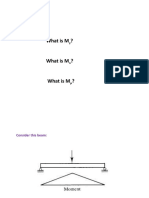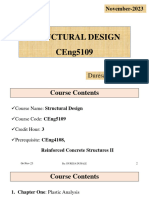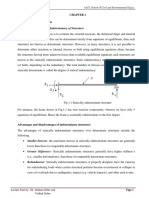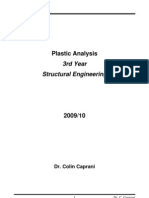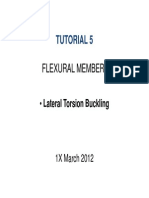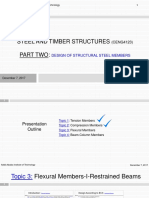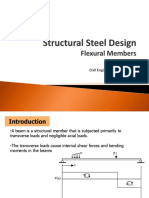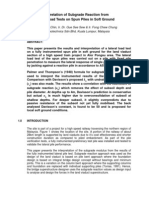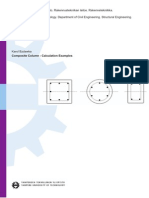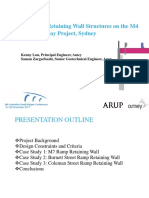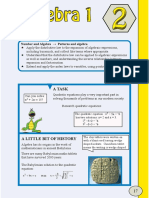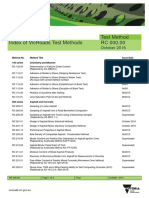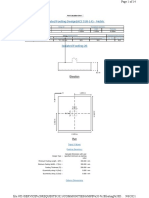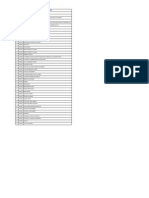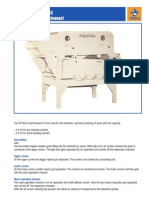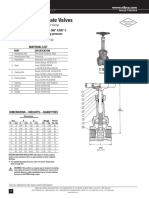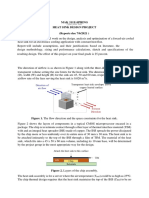DESIGN OF STEEL BEAMS
[Reading: Allen, H.G. and Bulson, P.S. Background to Buckling, McGraw-Hill, 1980; Trahair, N.S. and
Bradford, M.A. Behaviour and Design of Steel Structures, 2nd Ed., Taylor & Francis, 1994; CIVIL 211:
Lecture Notes on Beam Behaviour, Plastic Analysis and Plate Buckling]
INTRODUCTION
The strength limit state requirement for beam design was stated earlier as (see plastic analysis notes)
M * Mn
where
(1)
M* denotes the maximum bending moment due to the application of factored loads,
is the strength reduction factor (0.9), and
Mn is the nominal beam moment strength (MP or MRP)
M * Mn
1.2G+1.5Q
Analysis
(plastic
or
elastic)
Design Actions
(bending moments)
Factored
Loads
However, the assumption that the bending strength of the beam is MP is not always justified. Local
or lateral buckling may occur before the full plastic moment capacity of the section is reached,
and prevent it from being reached.
LOCAL BUCKLING AND SECTION MOMENT CAPACITY, MS
As discussed under plate buckling, parts of a
beam cross-section may buckle locally before the
fully plastic state is reached, or even before yield
stress is reached, depending on their slenderness
ratio. The high stresses in the compression flange
tend to cause buckling as shown in the figure,
limiting the section moment capacity, Ms.
The effects of local buckling are accounted for in
the same way as used for column sections, using
an effective section property that depends on the
slenderness ratio of the web and flange.
T
Plate element slenderness ratio, e:
b
e = 1
T
Beam_Design_Notes.doc
d
or 1
250
t
b1
d1
(2)
250
p1
JWB September 2005
�Plate element yield and plasticity limits, ey and ep:
ey and ep are limiting values of slenderness ratio that determine the way a section will fail (for the
origins of ey see pages 9 and 10 of Plate Buckling Notes). The values are specified in Table 5.2 of the
Steel Design Standard, NZS3404. Selected values are shown in Table 1 below.
Section slenderness ratio, s:
s = e of plate element with largest
Section description:
Hot-rolled
UB, UC
e
ey
(3)
Heavily welded
BOX
Cold-formed
CHS
Cold-formed
RHS
d0
Flange outstand b1
b1
b1
Plate element widths:
d1
b2
b1
b2
d1
ep
ey
16
14
d1
Flange b2 supported
along both edges
ep
30
30
ey
35
40
Web d1 supported
along both edges
ep
82
82
45
ey
180
130
60
Diameter d0
ep
50
ey
120
Table 1 Plasticity and yield slenderness limits (selected cases from Table 5.2, NZS3404).
Section moment capacity Ms and effective section modulus Zeff
(4)
Ms = Z eff y
Beams are divided into three categories depending on how the section slenderness compares with the
plastic and yield slenderness limits, as shown in Table 2.
Beam_Design_Notes.doc
p2
JWB September 2005
�Slenderness range
Behaviour
Effective Section Modulus
s < ep
Section able to reach and
sustain fully plastic moment
MP, without local buckling
ep < s < ey
Local buckling starts after
yielding, but before fully
plastic moment is achieved.
Moment capacity exceeds
yield moment, My, but is less
than MP
s > ey
Local buckling occurs before
yield stress reached (elastic
failure). Moment capacity
less than yield moment, My
Classification
Zeff = Zp
COMPACT
Zeff = Zelastic +
ey s
ey ep
(Zp Zelastic )
(intermediate between Zelastic and
Zplastic)
Zeff = Zelastic
NONCOMPACT
ey
s
alternatively can take Zeff as
Zelastic of the effective section
(cutting plate widths down to beff)
SLENDER
Table 2 Slenderness criteria and effective section modulus
Examples Effective section modulus and moment capacity
Case 1 Non-compact section
Determine the classification (compact, non-compact or slender) of a grade 300 360UB45.
Also find the effective section modulus and moment capacity.
b1
d1
t
From section property tables, d1/t = 48.2, b1/T = 8.46, Zelastic=689E3mm3, Zp = 777E3mm3 and
y = 320MPa.
b1
T
Flange slenderness:
fl =
Web slenderness
web =
d1
T
y
250
= 8.46
y
250
320
= 9.57 (cf ep = 9, ey = 16)
250
= 48.2
320
= 54.53 (cf ep = 82, ey = 180)
250
Can see that flange is much more critical than web and so dictates the
Section slenderness:
s = 9.57
Plasticity Limit:
ep = 9
Yield Limit:
ey = 16
And since
ep < s < ey
NON-COMPACT section
Effective section modulus:
Zeff = Zelastic +
ey s
ey ep
(Zp Z elastic )
16 9.57
(777 689)
16 9
= 770 10 3 mm 3
= 689 +
Section moment capacity
Beam_Design_Notes.doc
Ms = Zeff y = 770 320 Nm = 246.4 kNm
p3
JWB September 2005
�Case 2 Slender section
Determine the classification, effective section modulus and moment capacity of a grade 350
400WC144 (welded column).
From section property tables, d1/t = 21.88, b1/T = 12, Zelastic=2550E3mm3, Zp = 2830E3mm3 and
y = 380MPa.
b1
Flange slenderness:
fl =
Web slenderness
web =
d1
T
= 12
250
y
250
380
= 14.8 (cf ep = 8, ey = 14)
250
380
= 26.97 (cf ep = 82, ey = 180)
250
= 21.88
Can see that flange is much more critical than web and so dictates the
Section slenderness:
s = 14.8
Plasticity Limit:
ep = 8
Yield Limit:
ey = 14
And since
s > ey
Effective section modulus:
Zeff = Z elastic
Nominal section capacity
Ms = Z eff y = 2412 380 Nm = 916 kNm
SLENDER section
ey
s
= 2550
14
= 2412 10 3 mm 3
14.8
NOTE
Most standard, hot-rolled UB and UC sections are proportioned such that they fall into the COMPACT
classification. A small number are NON-COMPACT and none are SLENDER.
LATERAL BUCKLING AND MEMBER MOMENT CAPACITY, Mb
Just as Euler buckling can limit the axial load capacity of a column so lateral
buckling can limit the bending capacity of a beam.
Since lateral buckling involves the entire beam, the associated moment
capacity is referred to as the member moment capacity, Mb.
Consider a simply supported beam as shown, with the ends restrained against
twist. If a gradually increasing bending moment is applied to the beam it will
initially deflect in a plane perpendicular to the principal axis of bending
(vertically), but will eventually become unstable and
buckle sideways. As buckling proceeds the crosssection of the beam (at mid-span, for example), will
deflect laterally (out of plane) and also twist as shown.
The phenomenon is referred to as lateral-torsional or
flexural-torsional buckling, and the bending moment at
which buckling commences is known as the elastic
buckling moment Mcr.
Figure 1 Lateral torsional buckling
Beam_Design_Notes.doc
p4
JWB September 2005
�It can be shown (see limited derivation on p.7) that a uniform beam subject to a constant bending
moment about its major bending axis will buckle at a critical moment Mcr, defined by
Mcr
2EIy
=
L2
GJ + EIw
L2
(5)
where EIy is the minor axis flexural rigidity
GJ is the torsional rigidity
G is the shear modulus of elasticity
J is the torsion constant (a geometric property of the cross-section shape)
EIw is the warping rigidity
Iw is the warping constant (another geometric property of the cross-section).
2EIy
The first term
L2
, reflects the influence of the beams weak axis bending resistance
2EIw
The second term GJ +
L2
, accounts for the torsional resistance of the beam.
TORSIONAL RESISTANCE
Torsion is covered in greater depth later in the course. The notes below provide a brief overview of
some aspects that are relevant to the lateral buckling problem
UNIFORM OR ST VENANT TORSION
Illustrated in Fig. 2 is an I-beam, unrestrained against warping, subject to a constant torque T. The
effect is to cause a uniform rate of twist along the length of the member and the system of internal
shear stresses shown. The torque and twist are related by
T = GJ
d
dz
(with
d
= )
dz L
(6)
B
J is a relatively simple property of the cross-section shape. For the I-beam crosssection shown
J 2(BT 3 + d1 t 3 ) / 3
(7)
Open sections such as I beams are torsionally weak, with a low value of J and
correspondingly high internal shear stresses.
d1
t
In contrast, closed sections such as RHS and CHS have a high value of J and a closed loop form of
stress distribution. Their torsional resistance is very high.
Beam_Design_Notes.doc
p5
JWB September 2005
Torque, T,
causing twist, o
Shear stress distribution
in an I-beam due to torsion:
OPEN section low torsional resistance
Plan view
Shear stress distribution
in a box beam due to torsion
CLOSED section high torsional resistance
Figure 2 Uniform torsion
WARPING TORSION
Note in the plan view of Figure 2 how the ends of the I-beam displace out of their original plane as the
ends of the flanges rotate about the vertical (y) axis. The longitudinal movement is known as the
warping displacement. Provided warping is allowed to occur unrestrained it has little influence on the
torsional behaviour. However, if one end of the beam above was built in (rigidly fixed e.g. by casting
into concrete) the outcome would be different, as shown in Fig. 3.
warping prevented
Flanges forced to bend,
setting up flexural
and shear stresses
Sf
d
Sf
Tw
flange shear forces, Sf ,
generate warping torque
Tw = Sf x d
T (applied torque)
Figure 3 Torsion due to restrained warping
It can be seen in Fig. 3 that twisting the free end of the cantilever results in the flanges bending in a
horizontal plane. The resistance of the flanges to this horizontal bending sets up a system of equal and
opposite bending moments and shear forces acting in each flange. The pairs of equal and opposite
bending moments are known as bi-moments and are a type of internal action (along with normal bending
moments, shear force, etc.). The associated horizontal shear forces, Sf, create an additional resisting
torque known as the warping torque. For thin-walled open sections, such as I-beams, the warping
torque is likely to be the main contributor to torsional resistance.
It can be shown that the warping torque is given by
Twarp
d3
= EIw
dz 3
(8)
Iw =
Beam_Design_Notes.doc
Iy (D T ) 2
4
p6
For a section of arbitrary shape the warping constant Iw is complicated to
calculate. For a doubly symmetric I-beam section such as that shown
(9)
JWB September 2005
�Iw has units of length6, e.g. m6 or mm6. Values of Iw are included in the tables of section properties
that appear elsewhere in these notes.
Warping torque can still arise even if the beam ends are not restrained from warping. For example the
simply-supported beam of Fig. 1 would develop warping torques if subjected to an external torque at
mid-span (or as the result of twisting associated with lateral buckling).
Mcr
Mcr
warping unrestrained
at ends
flange bends in horizontal plane warping stresses develop
PLAN VIEW
Figure 4 Non-uniform torsion warping restrained by continuity over central section
DERIVATION OF LATERAL BUCKLING MOMENT
The following brief derivation, for the case of equal applied end moments, is provided for the curious
and can be omitted without prejudice.
u
Mcr
Mcr
x
Elevation
Section
pins prevent end twist
but allow rotation about
vertical axis (warping)
Plan at end
z
u
du
dz
Plan showing longitudinal axis
Figure 5 Lateral buckling under equal end moments
As with column buckling we seek a deflected and twisted equilibrium position of the beam. The lowest
value of Mcr at which this is possible determines the required buckling moment.
The governing differential equation for lateral bending equilibrium is
EI
d2u
= Mcr
dz 2
(10)
The left hand side defines the internal resisting moment and the right hand side is the horizontal
component of the applied moment.
Beam_Design_Notes.doc
p7
JWB September 2005
�The governing differential equation for torsional equilibrium is
GJ
d
d3
du
EIw
= Mcr
3
dz
dz
dz
(11)
d
d3
is the internal resistance to uniform torsion and EIw
is the internal resistance to warping
dz
dz 3
torsion. The right hand side defines the disturbing torque due to the applied moment.
GJ
When equations (10) and (11) are satisfied at all points along the beam the resulting deflected shape is
one of equilibrium. Such a shape is defined by
u=
Mcr
EIy / L
= sin
z
L
(12)
This buckled shape satisfies the boundary conditions of
zero lateral deflection
u(0) = u(L) = 0,
(13)
zero twist at supports
(0) = (L) = 0,
(14)
and ends free to warp
d2
d2
( 0) =
( L ) = 0.
2
dz
dz 2
(15)
Eq. (12) also satisfies the equilibrium equations (10) and (11) provided
2EIy
Mcr =
L2
GJ + EIw
L2
(5)
which defines the critical lateral-torsional buckling moment.
EFFECT OF BENDING MOMENT PATTERN
Equation (5) gives the critical moment for the standard case of uniform bm along the member. This is
the most severe loading case as it results in a constant, maximum compression force in the top flange.
Other loading cases allow the beam to reach higher buckling moments. A few cases are shown in the
table below.
Loading Case (and bms)
Critical Moment
Mcr
Comment
The standard case.
Value given in equation (5)
1.75Mcr
1.13Mcr
1.35Mcr
1.28Mcr
Beam_Design_Notes.doc
p8
JWB September 2005
�2.05Mcr
M
(1.75 + 1.05 + 0.3 2 )Mcr
2.5Mcr
Useful general rule for a beam segment
with linearly varying bm.
1 1
Table 3 Variation of critical moment with bending moment pattern (Table 5.6.1 in NZS3404 lists
more cases see p.19)
EFFECT OF LOAD HEIGHT
The derivation of Mcr assumes that loading is
applied at the shear centre of the crosssection (the point at which the resultant
internal shear force acts).
load
load
If the load is applied above this point it tends
to de-stabilise equilibrium and reduces the
critical moment. Conversely, applying the load
below the shear centre will increase Mcr.
beams resisting force
in line with load
Load applied at shear centre
No change in Mcr
beam resistance acts
through shear centre
Load applied at top flange
Destabilising effect
Mcr reduced
CRITICAL FLANGE
For future reference we define the critical flange as the flange which would deflect the furthest
laterally during buckling. Typically it is the compression flange, but in the case of a cantilever is the
tension flange.
MEMBERS, SEGMENTS, SUPPORTS AND RESTRAINTS
restraint to main member provided
by transverse secondary members
(if suitably connected)
twist restraint
at support
support
segment
segment
segment
MEMBER
1.
Members span between supports or between a support and a free end.
2.
Supports must provide FULL or PARTIAL restraint to a cross section (see definitions below).
3.
Members are usually restrained at discrete points between their supports.
4.
The effect of the restraints is to divide the member into segments. Member moment capacity is
then determined on a segment by segment basis.
5.
The member moment capacity needs to be determined only for x-axis bending. For y-axis
bending, only the section moment capacity is required (a beam cannot buckle laterally when bent
about its minor axis).
6.
Restraints provide full, partial or lateral restraint to a cross section, depending on the nature of
the restraint and the location of the critical flange.
Beam_Design_Notes.doc
p9
JWB September 2005
�LATERAL AND TORSIONAL RESTRAINTS
The nature and positioning of the restraints on a beam are of profound importance. The otherwise
poor performance of an unrestrained beam can be greatly improved by the provision of restraints.
Restraint of some sort is always provided at the supports of a beam, but frequently at other,
intermediate points along its length as well.
Restraints are classified as FULL, PARTIAL or LATERAL according to how well they restrain the
critical flange against lateral movement, and the whole cross-section against twisting.
A support must always provide FULL or PARTIAL restraint.
Type
Description
Examples (C denotes critical flange)
C
FULL (F)
Critical flange restrained against
lateral deflection and twist fully
restrained
C
web
stiffener
(Either flange could be critical)
PARTIAL (P)
LATERAL (L)
Some point other than critical
flange restrained against lateral
deflection and twist partially
restrained, or
full twist restraint with partial or
no lateral deflection restraint
Critical flange restrained against
lateral deflection
flexible
fly brace
UNRESTRAINED
(U)
No constraint to the critical
flange
ROTATIONAL RESTRAINT IN PLAN (WARPING RESTRAINT)
Figures 2 to 5 show warping rotations of the flanges about the minor y axis at beam ends. If these
minor axis warping rotations are restrained by a support, or other means, restraining moments and
shears develop adding significantly to the beams torsional resistance, raising its critical lateral
buckling moment. Fig. 6 shows four types of restraining moment that may be present at the ends of a
beam.
Mx
Major axis bending moment which provides restraint about the major axis (e.g. at the fixed end
of a cantilever). Mx is determined by normal structural analysis (plastic or elastic) and depends
on the applied load, beam span, etc.
Torque about the longitudinal z axis providing restraint against end twisting.
Mtop Top flange end moment providing restraint about the minor axis and against end warping.
Mbot Bottom flange end moment providing restraint about the minor axis and against end warping.
Rotational restraint about the y axis may for example, be provided by a continuation of the member
under consideration see Fig. 7
Beam_Design_Notes.doc
p10
JWB September 2005
Mtop
Mx
x
Mbot
Figure 6 Types of restraining moment at a support
ELEVATION
adjacent segment needs full lateral
restraint (or of shorter span)
restrained segment
lateral rotation
restrained by
adjacent segment
Effective length, Le
PLAN VIEW
Figure 7 Example of lateral rotation (warping) restraint provided by adjacent segments.
Dimensionless moment capacity, M b/M P
EFFECT OF IMPERFECTIONS
Elastic buckling, Mcr
Full plasticity, MP
1.0
0.5
NZS3404 Eq.5.6.1.1(3)
100
200
Slenderness ratio, L/ry
300
Figure 8 Moment capacity of imperfect beams
The inevitable presence of initial imperfections, such as residual stress and lack of straightness, will
influence the moment capacity of a beam just as they influenced the axial load capacity of a column.
Short, stocky beams will reach a moment capacity of MP and long slender beams will fail by lateral
buckling at a moment close to the theoretical Mcr. In between these extremes failure will involve a
Beam_Design_Notes.doc
p11
JWB September 2005
�combination of inelastic material behaviour (yielding) and lateral buckling. Fig. 8 shows measured
failure moments for I-beams compared with the MP and Mcr limits.
It can be seen from Fig. 8 that the empirical beam design curve specified in NZS3404 provides a
transition between the full plasticity and elastic buckling curves that is close to the lower bound of
the experimental results shown. The equation of the beam design curve is
Mb = 0.6
or
Ms
Mcr
+ 3 s
Mcr
Ms
(16)
Mb = s Ms
s = 0. 6
+ 3 s
(17)
where
Mcr
is the slenderness reduction factor,
Ms is the section moment capacity defined earlier, and
Mcr is the lateral buckling moment for a beam of effective length, Le.
Ms
Mcr
2 EIy
Mcr =
L2e
GJ + EIw
L2e
(18)
(which is the same as equation (5) apart from L being replaced by Le, the effective length.)
STRENGTH LIMIT STATE DESIGN TO NZS3404
Beam strength must be checked for each segment of a beam (see p.9 for segment definition). The
segment requiring the greatest strength dictates the required section size.
If M* denotes the design bending moment in a beam determined by analysis using the factored loads,
then the beam must satisfy
M * Ms
and
M * Mb
where is the strength reduction factor (0.9),
Ms is the nominal section capacity in bending,
and
Mb is the nominal member capacity in bending
SECTION MOMENT CAPACITY
Depends on plate slenderness limits. Defined earlier as
(4)
Ms = Z eff y
MEMBER MOMENT CAPACITY
Depends on cross-section properties, bending moment pattern, degree of restraint and load height:
(19)
Mb = m s Ms
where m is a moment modification factor that takes account of bending moment pattern
and
s is the slenderness reduction factor defined in Eq. (17).
Beam_Design_Notes.doc
p12
JWB September 2005
�Moment modification factor, m
For each segment of a beam, m can be determined from NZS3404s Table 5.6.1 (reproduced on p.19)
which lists a range of common bending moment patterns.
For bending moment distributions which are not represented in Table 5.6.1 the following general rule
can be used:
m =
where
*
1.7Mmax
(M ) + (M ) + (M )
* 2
2
* 2
3
* 2
4
(20)
2.5
*
Mmax
= maximum design bending moment in the segment, taken as positive in sign
M2* , M4* = design bending moments at the quarter points of the segment
M3* = design bending moment at the mid - point of the segment
EXAMPLES
1. Consider the right hand span, BC, of the
continuous beam shown. The secondary beams
apply loads and also provide restraint, hence we
must consider the three segments shown.
60kN
80kN
restraint
restraint
B
3m
Segment 1
C
2m
2m
2m
segment 1
segment 2
segment 3
-92
-92
72
Use Case 1 from Table 5.6.1 (also shown as last row
of Table 3 on p.8).
72
116
M = 92, mM = 72. (Choose M as the larger of the end moments)
Hence m = 72/92 = 0.783, and
m = 1.75 + 1.05 m + 0.3 2m = 1.75 + 1.05(0.783) + 0.3(0.783) 2 = 2.75 2.5
m = 2.5 (maximum value for this case)
Segment 2
72
116
Using Case 1 again:
M=116, mM = -72, and m = -72/116 = -0.62.
m = 1.75 + 1.05 m + 0.3 2m = 1.75 + 1.05( 0.62) + 0.3( 0.62) 2 = 1.21 ( 2.5)
m = 1.21
Segment 3 (also segment AB)
116
Use Case 9 from Table 5.6.1 (also appears as row 2 of Table 3 on p.8)
m = 1.75.
Could also have used Case 1 from Table 5.6.1, with M=116, mM=0, and m=0 giving
m = 1.75 + 1.05 m + 0.3 2m = 1.75 + 1.05(0.0) + 0.3(0.0) 2 = 1.75 ( 2.5)
Beam_Design_Notes.doc
p13
JWB September 2005
�2. Consider the right hand span, BC, of the
continuous beam shown. The secondary beams in
this case are assumed to provide no lateral
restraint and so BC must be treated as a single
segment.
Segment 1
40kN
no restraint
at loads
A
40kN
40kN
C
2m
2m
3m
segment 1
Same bending moment pattern as segments 1 and 3
in previous example hence the same
m = 1.75
2m
2m
segment 2
-109
38
105
Segment 2
93
M*max =109
M*2 =38
M*3 =105
M*4 =93
Since there is no matching bm pattern in Table 5.6.1 we resort to the general rule (20)
m =
*
1.7Mmax
(M ) + (M ) + (M )
* 2
2
* 2
3
* 2
4
1.7(109)
382 + 105 2 + 932
= 1.275 2.5
*
Mmax
is the (positive) value of the absolute maximum moment anywhere in the segment i.e. the
109kNm moment at end B in this case.
The quarter point and mid-span moments can be read directly from the bending moment diagram.
Slenderness reduction factor, s
s can be calculated from Equations (17) and (18):
s = 0. 6
Ms
Mcr
2 EIy
Mcr =
L2e
+ 3 s
Mcr
GJ + EIw
L2e
(17)
(18)
Ms, the section moment capacity and Le, the effective length, are needed first. However, the
calculation is tedious and it is usual to look up pre-calculated values of s in tables.
Table A1 sets out values of s for grade 300 UB sections with effective lengths ranging up to 10m.
Table A2 covers grade 300 UC sections.
Table A3 lists grade 300 PFC (Parallel Flange Channel) sections with effective lengths up to 7m.
Similar tables are available for most grades of standard steel sections.
Effective Length, Le
The effective length concept is used in the same way and for the same reasons as in the case of
column buckling. A single buckling moment equation can then be used, with different support
conditions, etc, accommodated by altering the effective length.
Beam_Design_Notes.doc
p14
JWB September 2005
�Effective length will depend on lateral-torsional (twist) restraint, y-axis rotational restraint (warping)
and load height relative to the shear centre.
(21)
Le = kt kL kr L
where kt = a twist restraint factor given in Table 5.6.3(1),
kL = a load height factor given in Table 5.6.3(2),
kr = a rotation restraint factor, typically = 1.0, otherwise as given in Tables 5.6.3(3).
In Tables 5.6.3(1), 5.6.3(2) and 5.6.3(3)
d = overall depth of section
L = segment length
nw = number of webs (e.g. 1 for I-beam, 2 for single-cell box)
tf = thickness of critical flange
tw = thickness of web
F = fully restrained
L = laterally restrained
P = partially restrained
U = unrestrained
and two of the symbols F, L, P, U are used to indicate the restraint conditions at the two ends,
e.g. FF.
Note For loads applied to a member along a principal (y) axis passing through the shear centre and
the centroid (such as an I-beam), the classification of load height applied through the top
flange need be applied only when the load itself or the structural system transferring the load
to the segment is laterally unrestrained.
Beam_Design_Notes.doc
p15
JWB September 2005
�Note
Restraint of minor axis rotation requires a support of significant stiffness. Typically this is not
available and the factor is left as kr = 1. NZS3404 states the following conditions:
1. kr shall only be taken as less than unity when effective rotational restraints act at one or both ends
of a segment which is restrained (torsionally) at both ends. kr shall be taken as unity for all
segments which are unrestrained at one end.
2. A rotational restraint at a cross section which is fully, partially or laterally restrained may be
considered to provide restraint against lateral rotation of the critical flange about the minor yaxis, providing that its flexural stiffness in the plane of rotation is comparable with the
corresponding stiffness of the restrained member, EIy.
3. A segment which has full lateral restraint may be deemed to provide rotational restraint to an
adjacent segment which is part of the same member (.e. the member containing both segments is
continuous through the point of restraint). See Fig.7.
4. A segment which does not have full lateral restraint shall be assumed to be unable to provide
rotational restraint to an adjacent segment which is part of the same member.
Beam_Design_Notes.doc
p16
JWB September 2005
�DESIGN CAPACITY CHECK strength limit state
The following steps can be used as an approximate guide to the sequence of operations needed to
check the design of a beam for flexure. Note that some details have been omitted for simplicity and
the procedure should not be used for practical design purposes.
FOR EACH LOAD CASE (1.2G+1.5Q, 0.9G+W, etc)
1.
Apply strength limit state factored loads (e.g. 1.2G+1.5Q) and analyse (plastic or elastic) to obtain
bending moment diagram.
2.
Determine support restraints plus any restraints acting on the beam between supports. Subdivide
the beam into segments accordingly.
3.
Determine section moment capacity, Msx = Ze y , by comparing the plate element slenderness
ratios with the limits to obtain the effective section modulus, Ze see p.2.
Alternatively, for standard UB and UC sections, the value can simply be looked up in Table A1 or
A2 (p.20).
FOR EACH SEGMENT:
4.
Determine the moment modification factor m using Table 5.6.1 or Eq. (20).
5.
Determine kt, kL, and kr (twist, load height and warping rotation restraint factors) and hence
obtain the effective length, Le = kt kL kr L , (Eq. 21)
- refer to Tables 5.6.3(1), 5.6.3(2) and 5.6.3(3).
6.
Determine the slenderness reduction factor, s, using Eqs. (17) and (18).
Alternatively, for standard sections, the value can be looked up in Table A1 or A2.
7.
Reliable member moment capacity, Mbx = m s Msx
8.
Check Mx* Mbx , where Mx* is the design (maximum) major axis bending moment in the segment.
9.
Ensure step 8 is satisfied for all segments and all load cases.
EXAMPLE 1
A 250UB31 Grade 300 beam is simply supported over a
span of 4.8m. Uniformly distributed live load together
with self weight gives a total w=1.2G+1.5Q=12kN/m.
Loading is applied to the top flange but does not provide
any restraint.
The end supports provide full lateral restraint of both
flanges.
Design Check
1.2G+1.5Q=12kN/m
250 UB 31
4.8m
bending moment
M*=34.6kNm
1. From BM diagram Mx* = 34.6kNm .
2. Restraints at ends only beam consists of a single, full length segment (4.8m long).
3. Section moment capacity Msx = Z e y = 0.9 395 10 6 320,000 = 113.8 kNm
(or 114 kNm direct from Table A1..the easiest route!)
Beam_Design_Notes.doc
p17
JWB September 2005
�4. Moment modification factor, m = 1.13 (Table 5.6.1, case 6 or 7, with m = 0 )
5. kt = 1.0 (FF in Table 5.6.3.1)
kL = 1.4 (FF in Table 5.6.3.2, load within segment)
kr = 1.0 (FF, but no minor axis rotation restraint Table 5.6.3.1)
Le = kt kL kr L = 1.0 1.4 1.0 4.8 = 6.72m
6. Slenderness reduction factor, s = 0.333 (0.333 0.281)
6.72 6.0
= 0.295 (Table A1).
7. 0 6. 0
In Table A1:
Le = 6m: s = 0.333
Le = 7m: s = 0.281
(result obtained by interpolation see alternative direct calculation below*)
7. Mbx = m s Msx = 1.13 0.295 114 = 38.0 kNM
8. Check:
Mx* Mbx
34.6 38.0 OK
9. Try a smaller size, 250 UB 25:
Msx = 92kNm
m = 1.13 (no change)
Le = 6.72m (no change)
s = 0.238 (interpolation, Table A1)
Mbx = m s Msx = 1.13 0.238 92 = 24.7 kNM
Mx* Mbx
34.6 24.7 NG
Smaller size inadequate
USE 250 UB 31
* Direct calculation of s
Properties needed for calculation:
E
200 10 6 kPa (material property)
80 10 6 kPa
(material property)
G
3
320 10 kPa (from Table of UB section properties)
y
4.47 10 6 m 4
Iy
65.9 10 9 m 6
Iw
89.3 10 9 m 4
J
Zelastic 354 10 6 m 3
Zp
397 10 6 m 3
Ze
395 10 6 m 4
s = 9.2, ep = 9, ey
Le
Msx
(from Table of UB section properties)
(from Table of UB section properties)
(from Table of UB section properties)
(from Table of UB section properties)
(from Table of UB section properties)
(from Table of UB section properties, or by using
ey s
= 16, Ze = Zelastic +
(Zp Z elastic ) = 395 10 6 m 3
ey ep
6.72m
Z e y = 395 10
2EIy
Mcr = 2
Le
s = 0. 6
320 10
GJ + EIw
L2e
Ms
Mcr
Beam_Design_Notes.doc
M
+ 3 s
Mcr
= 44.3kNm
= 126 . 4 kNm
(Eq. 18)
= 0.290 (c.f. 0.295 from Table A1)
p18
JWB September 2005
�Beam_Design_Notes.doc
p19
JWB September 2005
�Beam_Design_Notes.doc
p20
JWB September 2005
�EXAMPLE 2
Member:
250UB31 Gr 300 beam, simply supported over a span of 6.0m.
Loading:
Factored loading amounts to 12kN/m applied to the top flange
plus a moment of 40 kNm at the left-hand end. The load is not
laterally restrained.
40kNm
w = 12kN/m
250 UB 31
6.0m
40 kNm
Restraints:
LEFT: Both flanges fully restrained laterally, and against
minor axis rotation (warping restraint).
RIGHT: Bottom flange restrained against rotation and lateral displacement, top flange unrestrained.
DESIGN CHECK
1. Design moment:
From BM diagram Mx* = 40.0 kNm .
2. Segments:
Restraints at ends only beam consists of a single, full length segment (6.0 m long).
3. Section moment capacity Msx = 114 kNm (Table A1)
4. Moment modification factor, m:
40
40
Table 5.6.1, case 6: m =
=
= 0.74
2
wL / 8 12 62 / 8
m = 1.25 + 3.5 m = 1.34
5. Effective length:
Segment has Full restraint at one end, Partial at the other
End restraint = FP
d t 3 1
252 8.6 3 1
kt = 1 + f
=1+
= 1.015 (FP in Table 5.6.3.1)
L 2tw nw
6000 2 6.1 1
kL = 1.4 (Table 5.6.3.2: FP, load within segment, Top Flange)
kr = 1.0 (FP, but no minor axis rotation restraint Table 5.6.3.1)
Le = kt kL kr L = 1.015 1.4 0.85 6.0 = 7.25 m
6. Slenderness reduction factor, s
In Table A1: Le = 7m:
s = 0.281
Le = 8m:
s = 0.243
Le = 7.25m: s = 0.272 (linear interpolation)
7. Member capacity
Mbx = m s Msx = 1.34 0.272 114 = 41.5 kNM
8. Check:
Mx* Mbx
40.0 41.5 OK
Beam_Design_Notes.doc
p21
JWB September 2005
�EXAMPLE 3
160kN
B
2.5m
2.5m
C
4m
4m
2.5m
2.5m
The continuous beam ABCD is to be designed to carry load-factored midspan live loads of 1.5Q=160kN
that may act on any or all spans. The task is to select a suitable grade 300 UB section and suggest
appropriate lateral restraint locations.
Restraints:
All supports are assumed to provide full torsional restraint. Loads provide no restraint and are applied
63.7
to the top flange.
Analysis:
We will ignore self-weight and hope to show that its
effect is negligible. This leaves 5 load cases to consider,
as shown.
The results could be obtained from just two analyses (by
moment distribution, for example):
(a)
Load on AB
(b)
Load on BC
(a)
19.6
168.1
112.9
112.9
(b)
176.7
207.1
93.3
(c)
All other cases can be obtained as combinations of (a) and
(b). For example case (c) is simply (a)+(b), and case (d) is
(a)+(b)+mirror image of (a).
111.7
185.0
157.1
157.1
(d)
Maximum design moment (all cases) = 207.1kNm.
121.5
121.5
162.9
First approximation:
Assume a compact section, and take Ze = Zp.
For M * < Ze y
Require Zp >
44.1
44.1
(e)
207.1
= 767 10 6 m3 = 767 103 mm3
0.9 300,000
177.9
177.9
Try 360UB44.7, Zp=777x103 mm3 (isnt quite compact, but has only slightly smaller Ze=770 x103 mm3,
more than compensated for by y=320MPa, so that Z e y = 222 kNm , > 207.1)
Check end spans AB, CD
160kN
Top flange
Maximum M (+ve)=178kNm - load case (e) - top flange critical (comprn).
5m
FF segment, 5m long. kt=1, kL=1.4, kr=1, Le = 1.4*5 = 7.0m
s = 0.293 (Table A1)
m =
44.1
44.1 16
= 0.294 (Table 5.6.1, case 4)
3 160 5
(e)
m = 1.35 + 0.15 0.29 = 1.39
*
Mb = 1.39 0.293 222 = 90.4kNm < Mmax
(178 kNm) NG
177.9
Try lateral (L) restraint to top flange, mid-span
Beam_Design_Notes.doc
p22
JWB September 2005
�This creates two segments, 2.5m long. Considering the left hand segment:
FL segment, 2.5m long. kt=1, kL=1 (load outside seg), kr=1, Le = 1.0*2.5 = 2.5m
s = 0.778 (Table A1).
m = 1.75 (Table 5.6.1, case 1, m = 0, or case 9).
Mb = 1.75 0.778 222 = 302kNm ,
177.9
2.5m
*
(178 kNm) OK
However Mb must be Ms = 222 kNm > Mmax
Right segment certain to be less critical as bending moment pattern will give rise
to a higher m:
m =
44.1
= 0.25 (Table 5.6.1, case 1).
178
44.1
F
B
177.9
m = 1.75 + 1.05(0.25) + 0.3(.25) 2 = 3.78 = 2.5 (max) .
m s > 1, so Mb still = Ms = 222 kNm
OK
Bottom flange
Top flange restraint does not restrain bottom flange. For loading case
(b) bottom flange is critical so spans AB and BC revert to 5m segments.
113
(b)
Maximum M*(-ve)=113kNm
F
5m
FF segment, 5m long. kt=1, kL=1, kr=1, Le = 5.0m
s = 0.436 (Table A1)
m = 1.75 (Table 5.6.1, case 1, m = 0).
*
Mb = 1.75 0.436 222 = 169kNm > Mmax
(113 kNm) OK
Check middle span, BC
Top flange
Top flange is critical flange for load cases (b), (c) and (d).
Maximum M*(+ve)=207kNm - load case (b) - top flange critical.
FF segment, 8m long. kt=1, kL=1.4, kr=1, Le = 1.4*8 = 11.2m
FL
= 113;
8
m =
FF
s < 0.190 (Table A1; s = 0.19 is for Le=10m)
m
113
113
113 8
= 0.706 (Table 5.6.1, case 4)
160 8
FF
207
m = 1.35 + 0.36 0.706 = 1.60
*
Mb = 1.6 0.19 222 = 67.5kNm < Mmax
(207 kNm) NG
Try lateral (L) restraint to top flange, mid-span
This creates two segments, 4m long. Considering the left hand segment:
FL segment, 4m long. kt=1, kL=1 (load outside seg), kr=1, Le = 1.0*4 = 4m
s = 0.55 (Table A1).
m =
113
L
F
B
113
= 0.546 (Table 5.6.1, case 1).
207
207
4m
m = 1.75 + 1.05(0.55) + 0.3(.55) 2 = 2.42 .
*
m s = 1.33, so Mb = Ms = 222kNm > Mmax
(207kNm)
Beam_Design_Notes.doc
p23
OK
JWB September 2005
�Bottom flange
Predominantly ve bm in loading cases (e) and (a) results in critical bottom flange. Since bottom flange
is unrestrained it becomes an 8m segment.
Load case (e):
Maximum M*(-ve)=44 kNm
FF segment, 8m long. kt=1, kL=1, kr=1, Le = 8.0m
s = 0.248 (Table A1)
m = 1.0 (Table 5.6.1, case 8)
*
Mb = 1.0 0.248 222 = 55 kNm > Mmax
(44 kNm) OK
Load case (a):
Maximum M*(-ve)=64 kNm
FF segment, 8m long. kt=1, kL=1, kr=1, Le = 8.0m
s = 0.248 (Table A1)
m =
19.6
= 0.31 (Table 5.6.1, case 1).
63.7
m = 1.75 + 1.05(0.31) + 0.3(.31) 2 = 2.1
*
Mb = 2.1 0.248 222 = 115 kNm > Mmax
(64 kNm) OK
Check that dead load IS negligible:
Dead load is 44.7 kg/m giving wdead = 1.2 0.45 = 0.53 kN / m . Applying a uniform spread load of
0.53kN/m gives the bms shown below.
2.47
2.47
0.64
0.64
1.75
These are insignificant compared with the 1.6Q (live load) bms which ranged up to 207 kNm.
Final configuration:
360 UB 45
F
B
2.5m
2.5m
F
D
C
4m
4m
2.5m
2.5m
= additional restraint to top flange
Beam_Design_Notes.doc
p24
JWB September 2005









